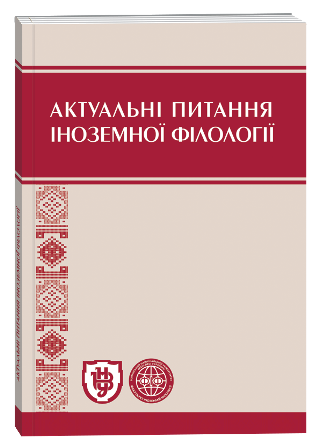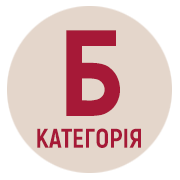THE FUNCTIONING OF DIACRITICAL, MATHEMATICAL AND TYPOGRAPHICAL SYMBOLS IN THE MODERN ENGLISH MASS MEDIA COMMUNICATIVE SPACE
DOI:
https://doi.org/10.32782/2410-0927-2020-13-18Keywords:
mass media, communicative space, diacritical marks, typographical marks, functionAbstract
This article is focused on the investigation of non-verbal and paraverbal resources which are utilized in the modern English-language mass media communicative space. In this paper, an analysis of diacritical, mathematical and typographical symbols is presented when their utilization places them within the general category of non-verbal and paraverbal elements in the modern English-language mass media communicative space. The group “Non-pictographical and non-photographic elements” includes punctuation marks, as well as diacritical, typographic and other auxiliary signs, and mathematical symbols, and abbreviations. As noted above, this study focuses in detail on the specific features of various types of diacritical, mathematical and typographical marks as integral modes within the media environment. Their semantic and structural features are outlined, their functional load is identified, and their role in the modern English-language mass media communicative space are demonstrated. In addition to their traditional use they are also used unconventionally. It has been established that diacritical, mathematical and typographical marks have a broader range of possibilities and multifunctional potential. Diacritical and punctuation marks often have a meaning which proves their irregular usage. It has been shown that these combinations are not inadvertent, but on the contrary, are well thought and logical techniques for presenting information and influencing potential audiences. It has been demonstrated that these graphic symbols are used for decorations and they often serve as trademarks. Arrows perform a number of different functions and serve as a means of directing attention from a text reference to a pertinent URL; to direct attention to a subsequent page or a subsequent issue of a periodical; to perform a specific pointing function, in order to direct the attention of readers to an image or potentially to a text box which is referred to within the body of an article; to indicate the item structure of information, in the same manner as bullet points; to visually reinforce a textual reference to literal or figurative movement in a vertical or horizontal direction; to perform a specific pointing function, in order to direct the attention of readers to an image or potentially to a text box which is referred to in an article; to duplicate the meaning given in a text.
References
Biletska, Olena. 2014. “Hrafichna forma postmodernistskoho khudozhnoho tekstu kriz pryzmu hrafichnoi linhvistyky”. Nova filolohiia 60: 17–22.
Hrad, Nataliia. 2014. “Suchasni multymodalni studii: modalna linhvistyka ta multymodalna stylistyka”. Odeskyi linhvistychnyi visnyk 4: 49–51. URL: http://nbuv.gov.ua/UJRN/olinv_2014_4_15 (data zvernennia: 13.11.2017).
Yefymenko, Viktoriia. 2013. “Intertekstualni zviazky mizh tekstovymy svitamy kazkovykh tvoriv”. Studia linguistica 7: 322–326.
Karp, Marta. 2016. “Vzaiemodiia zasobiv kontaminovanoi leksychnoi kohezii v teksti anhliiskykh multymodalnykh literaturnykh kazok Filipa Arda”. Naukovi zapysky Natsionalnoho universytetu “Ostrozka akademiia”. Seriia: Filolohiia 62: 136–139.
Marina, Olena. 2015. Semiotyka paradoksalnosti u kohnityvnokomunikatyvnomu vysvitlenni (na materiali suchasnoho anhlomovnoho poetychnoho dyskursu) : monohrafiia. Kherson: Ailant.
Bezemer, Jeff. 2014. Multimodal Transcription: a Case Study. Interactions, Images and Texts: a Reader in Multimodality. Berlin : De Gruyter Mouton, 155–170.
Jewitt, Carey. 2008. “Multimodal Classroom Research”. AERA Review of Research in Education 32: 241–267.
Kress, Gunther. 2003. Literacy in the New Media Age. London; New York: Routledge.
Norris, Sirgid. 2009. “Modal Density and Modal Configurations: Multimodal Actions”. The Routledge Handbook of Multimodal Analysis / ed. by C. Jewitt. London; New York: Routledge, 78–91.
O’Halloran, Kay. L. 2014. Multimodal Studies: Exploring Issues and Domains (Routledge Studies in Multimodality). 1st ed., 1–41.
Van Leeuwen, Theo. 2004. Introducing Social Semiotics. London: Routledge.
Діакритичний знак. 2014. URL: https://uk.wikipedia.org/wiki/Діакритичний знак (дата звернення: 02.09.2014)
Accounting & Business. 2007. No. 6. Vol. 10. June.
Advertising Leaflet. 2017. URL: http://www. hongkiat.com/blog/creative (дата звернення: 19.08.2018).
Community News. 2016. June, 23.
Financial Times. 2009. No. 27, 657. June, 6–7.
Financial Times. 2009. No. 37, 136. Tuesday, October, 20.
FT Weekend Magazine. 2008. No. 288. December, 20–21.
FT Weekend. 2010. No. 37436. Saturday/Sunday, October, 9–10.
Hello! 2009. No. 1085. August, 17.
International Herald Tribune. 2009. No. 39, 173. Thursday, February, 19.
London Lite. 2007. Wednesday, May, 9.
National Geographic. 2009. No. 1. Vol. 215. January.
National Geographic. 2009. No. 6. Vol. 215. June.
Newsweek. 2004. No. 10. September, 6–13.
Newsweek. 2004. No. 13. March, 29.
Newsweek. 2004. No. 21. May, 24.
Newsweek. 2004. No. 26. June, 28.
The Daily Telegraph. 2009. No 48, 054. Tuesday, December, 1.
The Independent. 2010. No. 7, 397. Monday, June, 28.
The New York Times. 2009. No. 54, 626. Thursday, March, 26.
The New York Times. 2010. No. 55, 051. Tuesday, May, 25.
The Sun. 2018. Thursday, May, 10.
The Times. 2008. No. 69 493. Friday, November, 28.
Time. 2003. No. 7. Vol. 162. August, 18–25.
Time. 2009. No. 6. Vol. 173. February, 9.
Time. 2009. No.11. Vol. 174. September, 21.
Time. 2013. No. 12. Vol. 181. April, 1.
USA Today. 2008. No. 5137. Thursday, November, 11.







